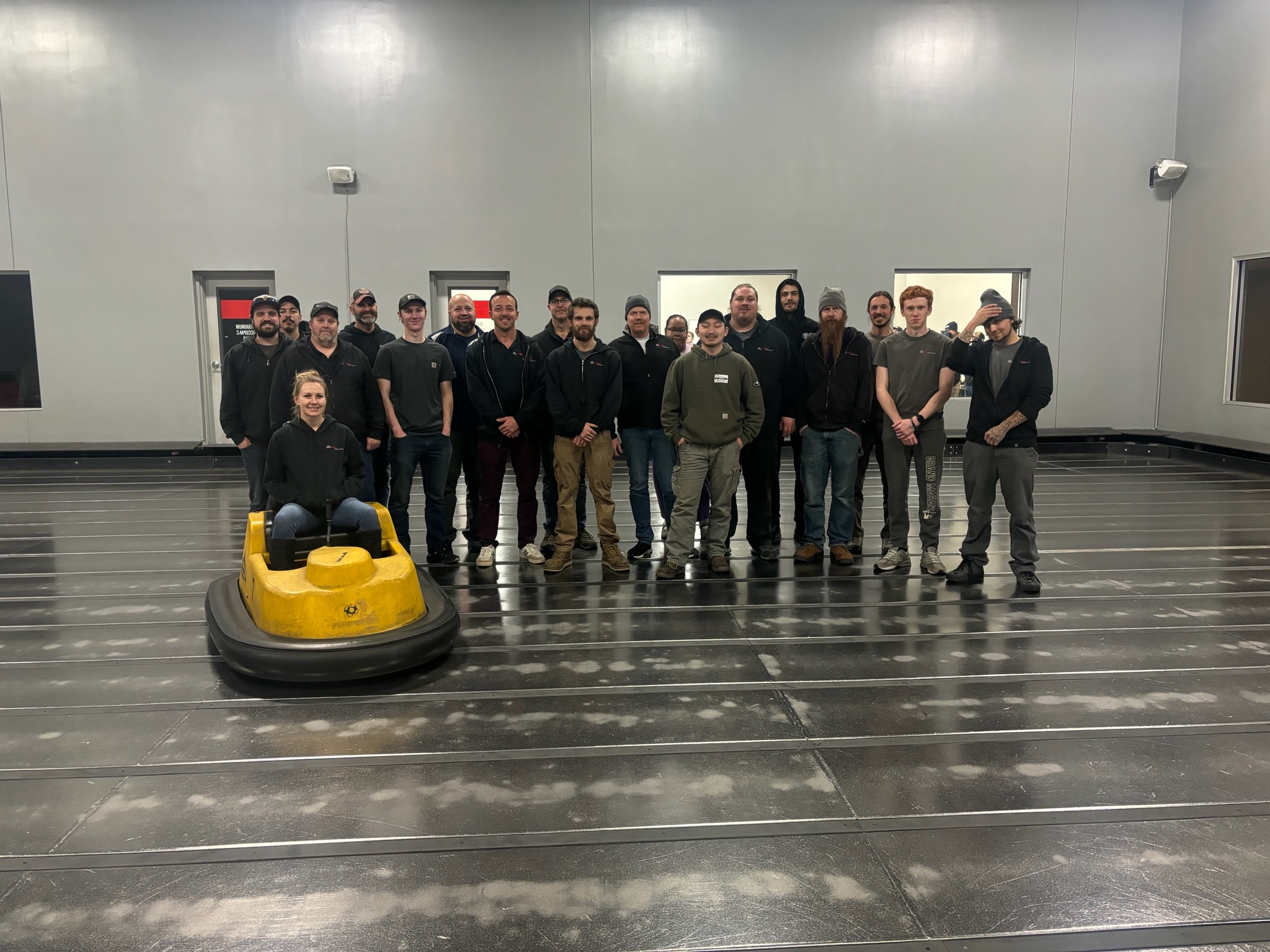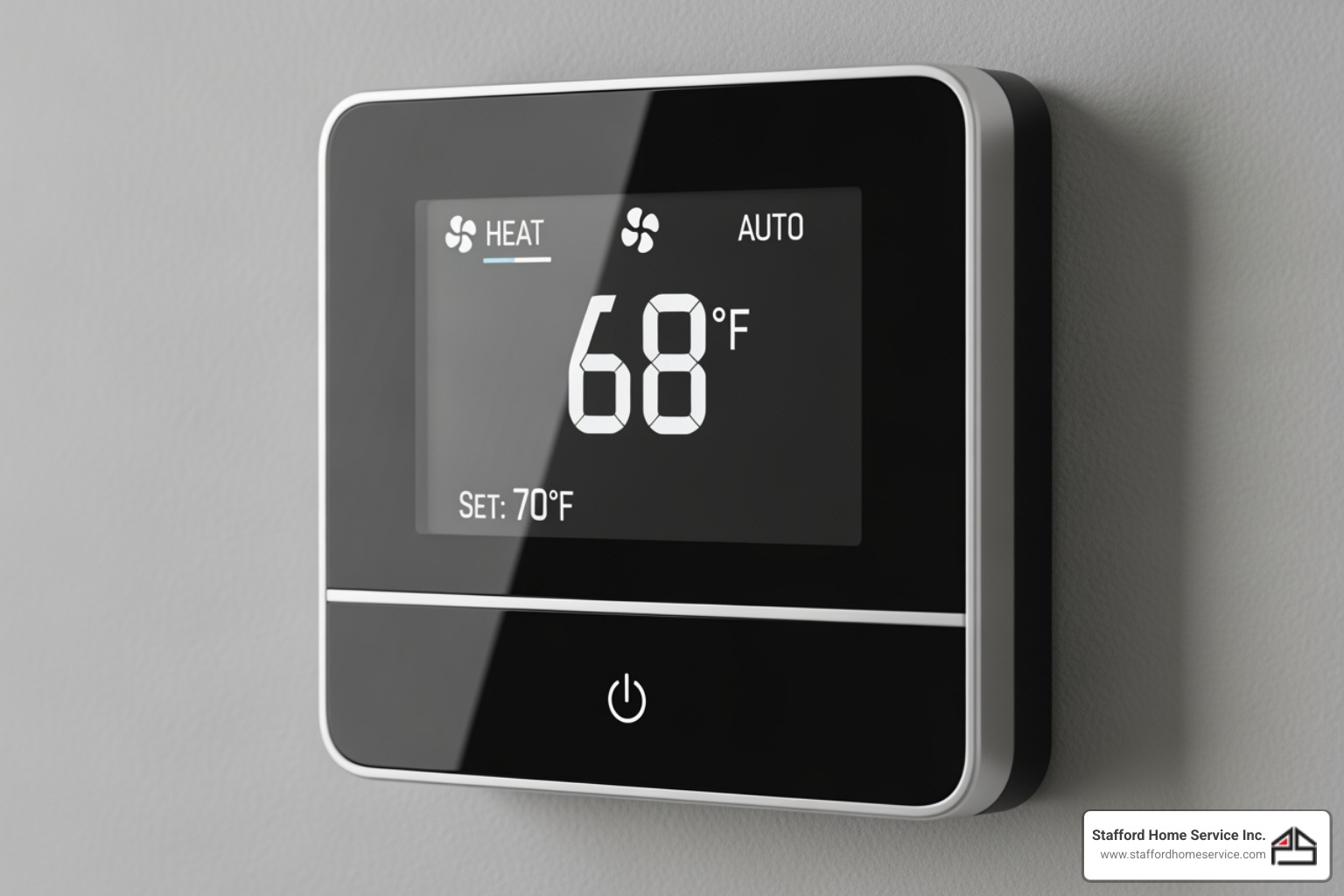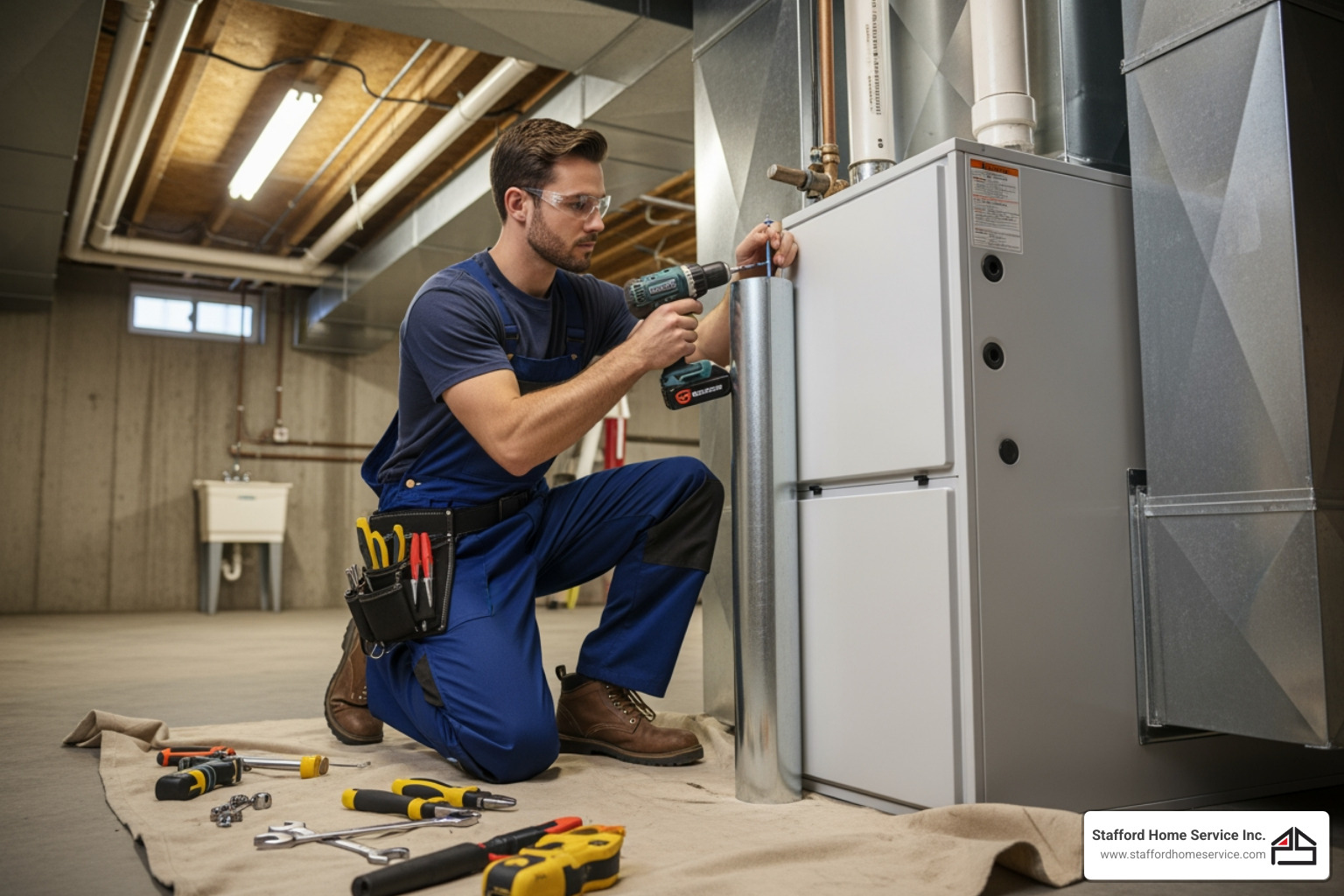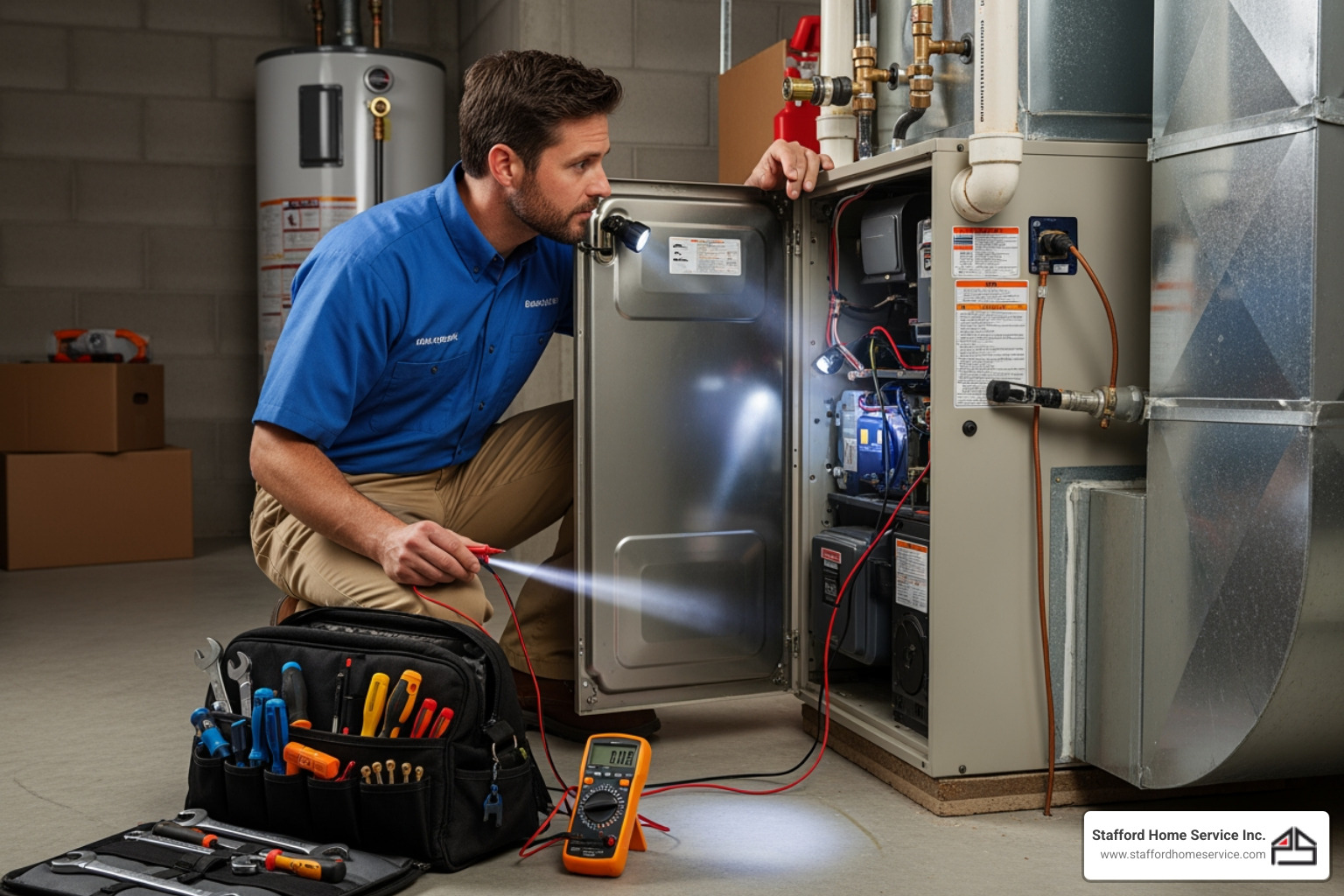Guard Your Grid: The Benefits of Whole House Surge Protection
Why Your Home’s Electronics Are Under Constant Threat
A whole house surge protector is an electrical device installed at your home’s main electrical panel that diverts dangerous voltage spikes away from your electronics and appliances before they can cause damage. Here’s what you need to know:
Key Benefits:
- Protects your entire home – not just devices plugged into power strips
- Guards hardwired appliances like HVAC systems, ovens, and water heaters
- Prevents cumulative damage from small, frequent surges
- Costs $200-$700 installed vs. thousands in potential electronics replacement
- Required by code in many new construction and renovation projects
How It Works:
- Monitors incoming voltage at your electrical panel
- Diverts excess energy to ground when surges occur
- Protects against both external surges (lightning) and internal surges (appliances)
Think about this: your home likely contains over $15,000 worth of electronics and appliances. Yet most homes experience up to 100 power surges per month that can slowly degrade your devices or destroy them instantly.
Lightning strikes and major storms grab headlines, but 80% of all surges actually originate inside your building – from everyday appliances like air conditioners, refrigerators, and even LED light bulbs cycling on and off.
Every time your HVAC system kicks on or your washing machine starts a cycle, it creates small voltage spikes throughout your electrical system. These mini-surges might not fry your electronics immediately, but they wear down sensitive circuit boards over time, shortening the lifespan of everything from your smart TV to your home’s heating system.
Without whole house protection, you’re essentially playing electrical roulette with thousands of dollars of equipment every single day.

Understanding Power Surges and How Protectors Work
Think of your home’s electrical system like a highway designed for cars traveling at 60 mph. Now imagine what happens when a race car suddenly zooms through at 200 mph – that’s essentially what a power surge does to your electrical system.
Power surges are temporary voltage spikes that shoot through your wiring, carrying far more electricity than your devices were designed to handle. Electricians call these “transient voltages” because they’re brief but potentially devastating visitors to your electrical system.
These electrical troublemakers come from two main sources. External surges arrive from outside your home – think lightning strikes, utility grid problems, or power line issues. While these grab all the headlines, they’re actually the minority. Internal surges are the real culprits, quietly wreaking havoc from inside your own home.
A whole house surge protector fights back using clever components called Metal Oxide Varistors (MOVs). Think of MOVs as electrical bouncers – they stand guard at your main panel, ready to redirect troublemaking voltage away from your precious electronics.
When a surge tries to enter your home, these MOVs sense the excess voltage and instantly create a detour route, sending that dangerous energy safely into your ground wire instead of letting it rampage through your house. It’s like having a storm drain for electricity.
The key to making this work is proper grounding – your surge protector needs a solid path to earth to dump that excess energy. Without good grounding, it’s like trying to empty a bucket with no place to pour the water.
Organizations like The NEMA Surge Protection Institute (NSPI) work hard to educate homeowners about surge protection. They understand that modern homes face more electrical threats than ever before, which is why newer electrical codes increasingly require surge protection for new construction and major renovations.
How a Surge Protector Functions
Your whole house surge protector is like a vigilant security guard stationed at your home’s electrical entrance. It sits right at your main electrical panel, monitoring every volt that enters your house.
The moment it senses an overvoltage condition – whether from a lightning strike or your air conditioner starting up – it springs into action faster than you can blink. The MOVs inside instantly change their electrical resistance, creating a superhighway for that excess energy to bypass your home’s wiring entirely.
This process of diverting excess energy happens in milliseconds. The dangerous voltage gets rerouted through the ground wire and safely into the earth, never reaching the delicate circuit boards in your TV, computer, or smart appliances.
Your surge protector essentially acts as your first line of defense, creating a protective barrier that shields every electrical device in your home. It’s protecting circuit boards and sensitive electronics throughout your entire house, not just the devices plugged into individual power strips.
Internal vs. External Surges: The Hidden Danger
While we worry about lightning, a shocking 80% of all power surges originate inside your home.
Every time a large appliance cycles on or off, it creates a small voltage spike. Your HVAC system is a primary culprit, sending electrical ripples through your house daily. These frequent internal surges from normal appliance cycling cause cumulative damage, slowly wearing down sensitive electronics over time. Your smart TV doesn’t just fail; it’s weakened by thousands of these mini-surges.
External surges from lightning strikes and utility grid issues are less common but can be catastrophic, destroying electronics instantly. A whole house surge protector guards against both the dramatic external threats and the persistent internal ones, offering complete protection.
Why Your Home Needs a Whole House Surge Protector
Take a moment to look around your home. That smart TV streaming your favorite show, the computer where you work, the refrigerator keeping your food fresh, and the security cameras protecting your family – together, they represent an investment of $15,000 to $20,000 or more. Every single one of these devices contains delicate circuit boards and microprocessors that can be damaged or destroyed by power surges.

Modern homes aren’t just filled with more electronics than ever before – they’re filled with smarter electronics. Your thermostat learns your schedule, your doorbell recognizes faces, and your washing machine sends alerts to your phone. All of this incredible technology makes our lives easier, but it also makes us incredibly vulnerable to electrical damage.
A whole house surge protector creates a protective shield around your entire electrical system. Instead of hoping individual power strips will catch every surge, you’re protecting everything at once – from the smart fridge in your kitchen to the garage door opener you use every day.
Benefits of Comprehensive Protection
When you install a whole house surge protector, you’re not just buying a device – you’re investing in peace of mind. Every outlet in your home becomes protected, which means that lamp in your bedroom and the coffee maker in your kitchen are just as safe as the expensive electronics in your living room.
Your hardwired appliances finally get the protection they deserve. Think about your HVAC system, electric water heater, built-in microwave, and garbage disposal. These essential appliances can’t be plugged into a power strip, leaving them completely vulnerable without whole-house protection. When your air conditioner’s compressor gets fried by a surge, you’re looking at a repair bill that makes surge protection seem like the bargain of the century.
The beauty of comprehensive protection is that it prevents the slow, invisible damage that shortens your electronics’ lives. Those small, daily surges we talked about earlier? They’re constantly chipping away at your devices’ lifespan. A whole house surge protector stops this gradual destruction, helping your electronics last years longer than they would otherwise.
The financial math is simple: spending a few hundred dollars now can save you thousands later. It’s like buying insurance for every electronic device in your home, except this insurance actually prevents the damage from happening in the first place.
Whole House vs. Power Strip Protectors
Here’s where many homeowners get confused. You might think, “I already have surge protectors – those power strips with the little reset buttons.” While those strips do provide some protection, they’re like using an umbrella in a hurricane when what you really need is a sturdy roof.
FeatureWhole House Surge ProtectorPower Strip Surge ProtectorCoverageProtects every circuit and outlet in your homeOnly devices plugged directly into the stripInstallationProfessional installation at your main electrical panelSimply plug into any outletAppliances ProtectedEverything – HVAC, water heater, hardwired appliances, all outletsOnly what’s plugged into the stripSurge CapacityHandles massive surges from lightning and utility issuesLimited to smaller surges
Power strip protectors work great for point-of-use protection – they’re perfect for your computer setup or entertainment center. But they create dangerous gaps in protection throughout the rest of your home. Your refrigerator, dishwasher, and HVAC system remain completely exposed.
The smartest approach is a layered protection strategy. Install a whole house surge protector as your primary defense, then use quality power strips for extra protection on your most sensitive electronics. This combination gives you the comprehensive coverage your modern home needs.
Signs Your Home is at Risk
Your home’s electrical system has ways of telling you when it’s under stress. Frequent flickering lights often signal voltage fluctuations that could damage sensitive electronics. If lights dim when your air conditioner kicks on or brighten unexpectedly, your system is experiencing the kind of instability that surge protection can address.
Circuit breakers that trip regularly might indicate your electrical system is struggling with power fluctuations. While an occasional trip is normal, frequent trips suggest ongoing electrical stress that could harm your devices.
Older home wiring presents special challenges. If your home was built before modern electrical codes, the wiring and grounding systems might not provide adequate protection against today’s more frequent and varied surge threats.
High-energy appliance use creates its own risks. Homes with multiple large appliances, power tools, or energy-intensive devices generate more internal surges. Every time these devices cycle on and off, they send voltage spikes throughout your electrical system.
Living in a storm-prone area obviously increases your risk of external surges from lightning strikes and utility grid issues. But even if you live somewhere with mild weather, 80% of surges come from inside your home anyway.
If any of these situations sound familiar, your home would benefit from the comprehensive protection that only a whole house surge protector can provide.
Choosing and Installing Your Whole House Surge Protector
Making the decision to protect your home with a whole house surge protector is just the first step. The real magic happens when you choose the right device and have it installed properly by professionals who know what they’re doing.
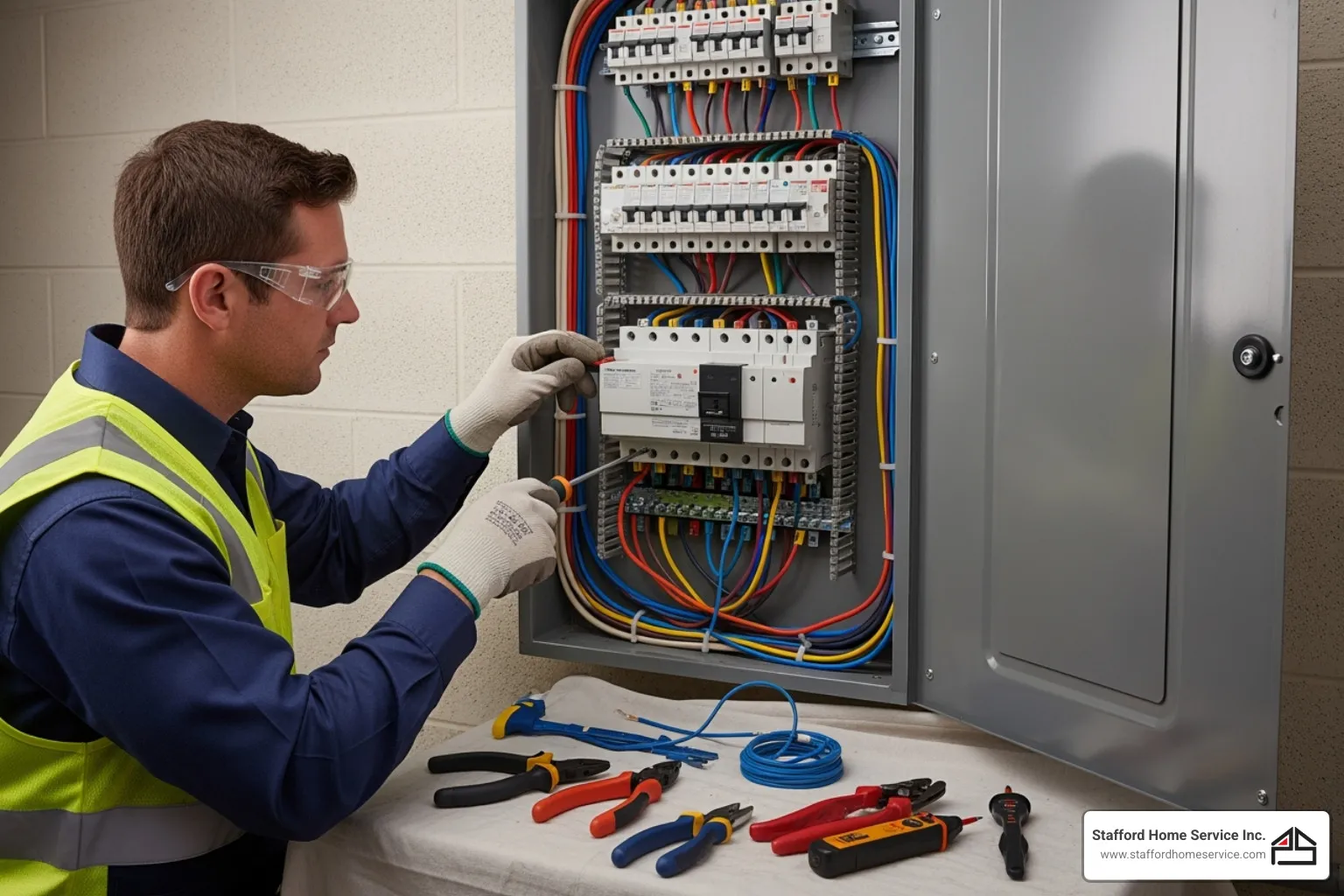
Here’s the thing about electrical panels: they’re not exactly the place for weekend DIY projects. Your main breaker panel carries enough voltage to be dangerous – or even deadly – if handled incorrectly. This is why professional installation isn’t just recommended, it’s absolutely essential for your safety.
A licensed electrician brings years of training and experience to your project. They understand how your electrical system works, know the ins and outs of proper grounding techniques, and will install your whole house surge protector according to National Electrical Code (NEC) requirements. This expertise ensures your investment actually works when you need it most.
What to Look for in a Whole House Surge Protector
Shopping for a whole house surge protector can feel overwhelming with all the technical specifications. Let’s break down what really matters so you can make an informed choice.
The joule rating tells you how much energy the device can absorb before it gives up the ghost. Think of it like a sponge – a higher joule rating means it can soak up more electrical punishment before becoming saturated. While joules matter, they’re just part of the story.
The amperage rating (measured in kA) is equally important. This number shows the maximum surge current your protector can handle. Look for units rated at 50kA or higher – some premium models can handle 80kA or even 140kA. When lightning decides to visit your neighborhood, you’ll want all the protection you can get.
Clamping voltage is where the rubber meets the road for protecting your sensitive electronics. This measurement tells you the maximum voltage that can pass through before the protector kicks in. Lower is better here – aim for less than 700V for whole house protection.
Never compromise on UL 1449 certification. This stamp from Underwriters Laboratories means the device has passed rigorous safety and performance tests. It’s like a seal of approval that your protector will actually protect when surge strikes.
A solid warranty with connected equipment coverage shows the manufacturer stands behind their product. The best units offer warranties up to 5 years and will reimburse you for damaged electronics if their protector fails to do its job. Some even offer coverage up to $100,000 in connected equipment.
LED status indicators are your early warning system. These little lights let you know at a glance whether your protector is still on duty or if it sacrificed itself during a major surge event and needs replacement.
Types of Whole House Surge Protectors
Understanding the different types of whole house surge protector devices helps you choose what’s right for your home’s specific needs.
Type 1 protectors install on the utility side of your main service entrance, before the main breaker. These heavy-duty units are typically used in commercial settings or new construction where they integrate directly into the service entrance equipment. They’re your first line of defense against powerful external surges from lightning strikes or utility grid problems.
For most homes, Type 2 protectors are the sweet spot. These install on the load side of your main service disconnect – usually right at your home’s main electrical panel. Type 2 units protect against external surges that slip past the utility side and the internal surges created by your own appliances cycling on and off.
Within the Type 2 family, you’ll find panel mount devices that install as external units wired into your main panel. These typically mount next to the panel with short connecting wires.
Breaker integrated devices offer a sleek alternative – they snap directly into your electrical panel just like a regular circuit breaker. These integrated units work great with specific load centers like Square D Homeline or QO panels, and Eaton CH panels. The direct connection to the panel’s bus bars makes them very effective, plus they save space with their clean, built-in design.
Our electricians can evaluate your specific electrical panel and recommend the best type and model for your home’s unique setup.
Typical Cost of a Whole House Surge Protector
We know you’re wondering about the investment involved. The good news is that comprehensive surge protection is more affordable than you might think, especially when you consider what you’re protecting.
The device cost varies depending on the features and protection level you choose. Basic models start at reasonable prices, while high-performance units with advanced features and robust warranties cost more upfront but offer superior protection and peace of mind.
Professional installation cost covers the expertise and safety that comes with having licensed electricians handle the high-voltage work at your main panel. This ensures proper grounding, code compliance, and warranty validity – all critical factors for effective protection.
The total investment range for purchasing and professionally installing a whole house surge protector makes it one of the most cost-effective home improvements you can make. When you consider that a single major surge could destroy thousands of dollars worth of electronics and appliances, the protection becomes a no-brainer.
The long-term value extends beyond just preventing catastrophic loss. By stopping those constant small surges that slowly degrade your electronics, a properly installed whole house surge protector helps your devices last longer and perform better throughout their lives. It’s an investment that pays dividends every single day.
Frequently Asked Questions about Whole House Surge Protection
When homeowners learn about whole house surge protector devices, they naturally have questions. We’ve heard them all over the years, and we’re happy to share what we know. Here are the most common concerns we address during our electrical consultations.
Does the National Electrical Code (NEC) require surge protectors?
Here’s something that surprises many homeowners: yes, surge protection is now required by code in many situations. The National Electrical Code made a significant change in its 2020 edition with section 230.67, which now mandates surge protective devices for dwelling units.
What does this mean for you? If you’re building a new home, doing major renovations, or upgrading your electrical service, you’ll likely need a whole house surge protector installed. It’s not just a recommendation anymore—it’s the law in most areas that have adopted the latest NEC standards.
This shift happened because electrical professionals and safety organizations finally recognized what we’ve been seeing for years: power surges cause real damage and pose genuine safety risks. The National Fire Protection Association has been pushing for this change, and now it’s helping ensure that modern homes have better built-in protection against electrical damage.
If you’re wondering whether this applies to your specific project, our electricians can review your situation and let you know what’s required in your area.
Is professional installation really necessary?
We get asked this question a lot, and our answer is always the same: absolutely, without question. Installing a whole house surge protector means working directly with your home’s main electrical panel, where serious voltage lives. This isn’t like swapping out a light switch or installing a ceiling fan.
Think about what’s involved here. Your main panel carries enough electricity to power your entire home—that’s potentially lethal voltage we’re talking about. One wrong move could result in severe injury or death. We’ve seen too many DIY electrical projects go wrong, and the consequences are never worth the money saved.
Beyond safety, there’s the technical side. A whole house surge protector only works properly if it has the right connection to your home’s grounding system. Getting this wrong means your expensive protection device might not actually protect anything when you need it most.
Then there’s the warranty issue. Most manufacturers will void their warranty if someone other than a licensed electrician installs their device. That connected equipment coverage we mentioned earlier? Gone if you try to do it yourself.
Our electricians have the training, tools, and experience to do this job safely and correctly. We also make sure everything meets current electrical codes, which protects you if you ever need to file an insurance claim or sell your home.
Will a whole house unit protect my smart home and HVAC system?
This is one of our favorite questions because the answer is such good news: yes, a whole house surge protector covers everything electrical in your home, including all those smart devices and your heating and cooling system.

Your smart home devices—things like your security system, smart thermostat, voice assistants, and automated lighting—all contain sensitive microprocessors. These tiny computer chips are incredibly vulnerable to voltage spikes. Even small surges that wouldn’t damage older, simpler devices can fry the delicate circuits in modern smart technology.
Here’s what makes a whole house surge protector so valuable: it catches surges before they enter your home’s wiring system. This means comprehensive protection for every smart device, whether it’s plugged into an outlet or hardwired into your electrical system.
Your HVAC system deserves special mention because it’s probably one of your home’s most expensive appliances. Modern heating and cooling systems rely on sophisticated control boards to manage everything from temperature settings to energy efficiency. These control systems are just as vulnerable to surge damage as your computer or smart TV.
Since your HVAC system connects directly to your electrical panel, there’s no way to plug it into a power strip for protection. A whole house surge protector is really the only practical way to safeguard this major investment.
We’ve seen HVAC systems damaged by surges, and the repair bills can be shocking. Sometimes the damage isn’t immediately obvious—the system might seem to work fine but develop problems weeks or months later as the damaged components gradually fail. Protecting your HVAC system with comprehensive surge protection helps ensure it runs reliably for years to come.
Secure Your Home’s Electrical Future
Think about it for a moment – we’re living in an age where our homes are basically electronic ecosystems. Every room contains thousands of dollars worth of sensitive devices, from smart thermostats and security systems to entertainment centers and home offices. Yet most of us never think twice about the invisible threat that could wipe out these investments in seconds.
Power surge vulnerability isn’t just a minor inconvenience anymore – it’s a real financial risk that grows with every new device we bring into our homes. Those daily mini-surges from your air conditioner cycling on and off? They’re slowly chipping away at your electronics’ lifespan. And that rare but devastating lightning strike or utility grid failure? It could destroy everything in an instant.
Protecting your valuable electronics with a whole house surge protector is one of the smartest investments you can make as a homeowner. It’s not just about gadgets – it’s about preserving your family’s comfort, security, and financial well-being. When your HVAC system, refrigerator, or home security system fails unexpectedly, it’s not just an expense – it’s a major disruption to your daily life.
Proactive home maintenance means thinking ahead, and surge protection is the perfect example of an ounce of prevention being worth a pound of cure. Rather than crossing your fingers and hoping for the best, you’re taking control of your home’s electrical future.
At Stafford Home Service Inc., we’ve seen how devastating surge damage can be – and how easily it can be prevented. Our experienced team understands that your home is your sanctuary, and protecting it requires both expertise and genuine care. We’re not just installing a device; we’re providing you with peace of mind and safeguarding your family’s comfort for years to come.
Our commitment to quality workmanship means every installation is done right the first time, following all safety codes and manufacturer specifications. We stand behind our work because we know how important your home’s electrical system is to your daily life.
Ready to take the smart step toward comprehensive electrical protection? Your home’s electronics are counting on you to make the right choice. Schedule your professional electrical service in Minneapolis and let our expert electricians install the whole house surge protector solution that will keep your valuable investments safe for years to come.
Customer Testimonials
Our customers consistently praise our knowledgeable technicians, prompt service, and the lasting quality of the work we deliver.
ABOUT STAFFORD HOME SERVICE
In 2007, long-time team members Kris Thompson and Dan Fournier took ownership of Stafford Home Service. With over 60 years of combined expertise in residential electrical and HVAC, they continue the legacy of former owners Curt Cervin and Paul Stafford—delivering quality workmanship and complete customer satisfaction.
70+ Years
Family-operated experience delivering trusted electrical, heating, and cooling services.
800+
Verified 5-star reviews from satisfied customers.
